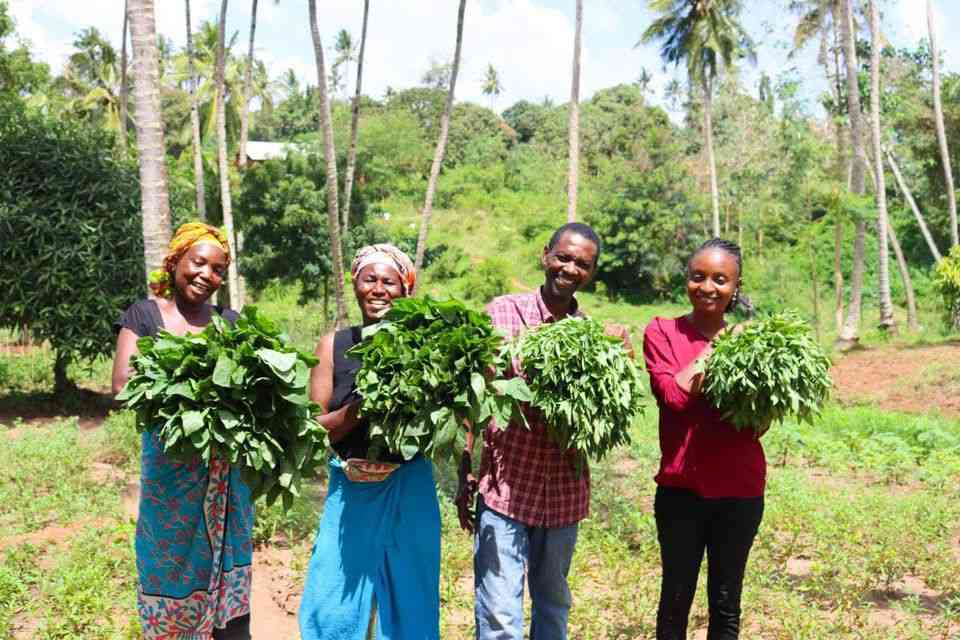
Maize is a primary staple for 96 per cent of Kenyans, and over 75 per cent of total maize output is produced by smallholder farmers.
However, productivity among smallholder farmers is declining in the face of declining land size, soil quality, and limited use of complementary inputs such as fertiliser, water scarcity and drought.
Use of hybrid seed among smallholder maize farmers has not resulted in corresponding increases in production despite the fact that more than three quarters of smallholder maize farmers have adopted improved seed.
Given that a large majority of smallholder farmers grow maize, getting farmers to grow varieties that are suited to their environments is a key strategy. For example, popular maize varieties were released in the 1980s despite the fact that almost 200 maize varieties have entered the market since 2000.
A recent study by Tegemeo Institute and the University of California found that by targeting the right variety for the area in which it is grown, maize productivity increased by 40 per cent. However, challenges remain in getting farmers to adopt this seed. Many cannot afford the higher cost of improved seed and fertiliser and have no access to financing.
Some cannot afford fertiliser to maximise yields, while some plots with poor soils do not respond to fertiliser. Some simply do not have access to verifiable quality seed and fertiliser in their local stores.
First, and most importantly, farmers need to learn about the new varieties. Information about these varieties is sometimes scanty, resulting in farmers having unmet expectations that may result in failure to adopt these technologies.
Secondly, farmers should use complementary inputs to the recommended levels. Although technological innovation is proven to increase yields for key staples, combined use of fertiliser and improved seed is still low.
The study found that although farmers use the correct seed rate for hybrid seeds (a farmer should plant between 8-10 kilogrammes of seed per acre), farmers use slightly above the recommended rate for fertiliser. Farmers must ensure the fertiliser used enriches the soil. According to a KALRO study in 2015, a majority of the soils in the maize-growing region are acidic.
Therefore, farmers should use fertilisers that are blended with the required nutrients and trace minerals to maximise their output. Key to getting farmers to increase use of fertiliser is providing innovative financing option to farmers, and improving knowledge and access to required mix of nutrients.
Thirdly, farmers should be able to get the knowledge in a way that is easily understandable for them to make the necessary decisions. This is also a call for strengthening the national extension systems that are now under the county governments.
Increasing the food available per capita requires a paradigm shift to overcome yield stagnation. This entails policy interventions that operationalise the promotion of technology bundles that complement each other to boost crop yields, diversify technology options, and address liquidity and investment constraints.
Technology adoption is a function of both smallholder farmer demand and the markets available to them.
Increasing investments in research and development can lead to well-tailored innovations such as hybrid seeds that can overcome pest and diseases in mid-altitude areas. Improving access to credit and markets could help ensure that innovations in seed systems are truly profitable for smallholder farmers.
With persistent pressure on available land resources and the generally risky nature of the sector, there is no doubt that farmers will rely more on technological innovations to boost productivity.
Stay informed. Subscribe to our newsletter
This would enable smallholder farmers to harness arising opportunities for improved household welfare from participating in the market.
 The Standard Group Plc is a
multi-media organization with investments in media platforms spanning newspaper
print operations, television, radio broadcasting, digital and online services. The
Standard Group is recognized as a leading multi-media house in Kenya with a key
influence in matters of national and international interest.
The Standard Group Plc is a
multi-media organization with investments in media platforms spanning newspaper
print operations, television, radio broadcasting, digital and online services. The
Standard Group is recognized as a leading multi-media house in Kenya with a key
influence in matters of national and international interest.
 The Standard Group Plc is a
multi-media organization with investments in media platforms spanning newspaper
print operations, television, radio broadcasting, digital and online services. The
Standard Group is recognized as a leading multi-media house in Kenya with a key
influence in matters of national and international interest.
The Standard Group Plc is a
multi-media organization with investments in media platforms spanning newspaper
print operations, television, radio broadcasting, digital and online services. The
Standard Group is recognized as a leading multi-media house in Kenya with a key
influence in matters of national and international interest.










